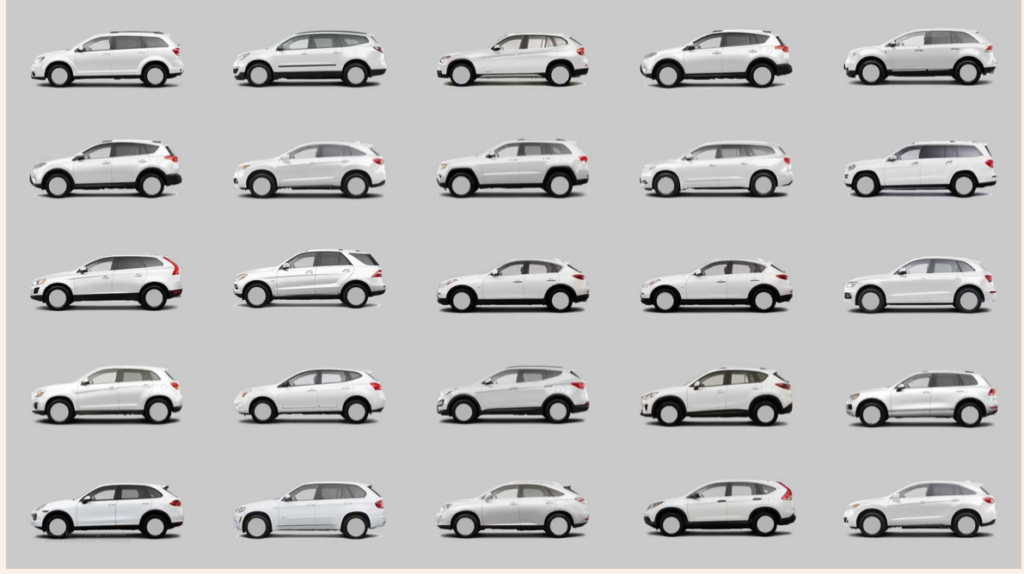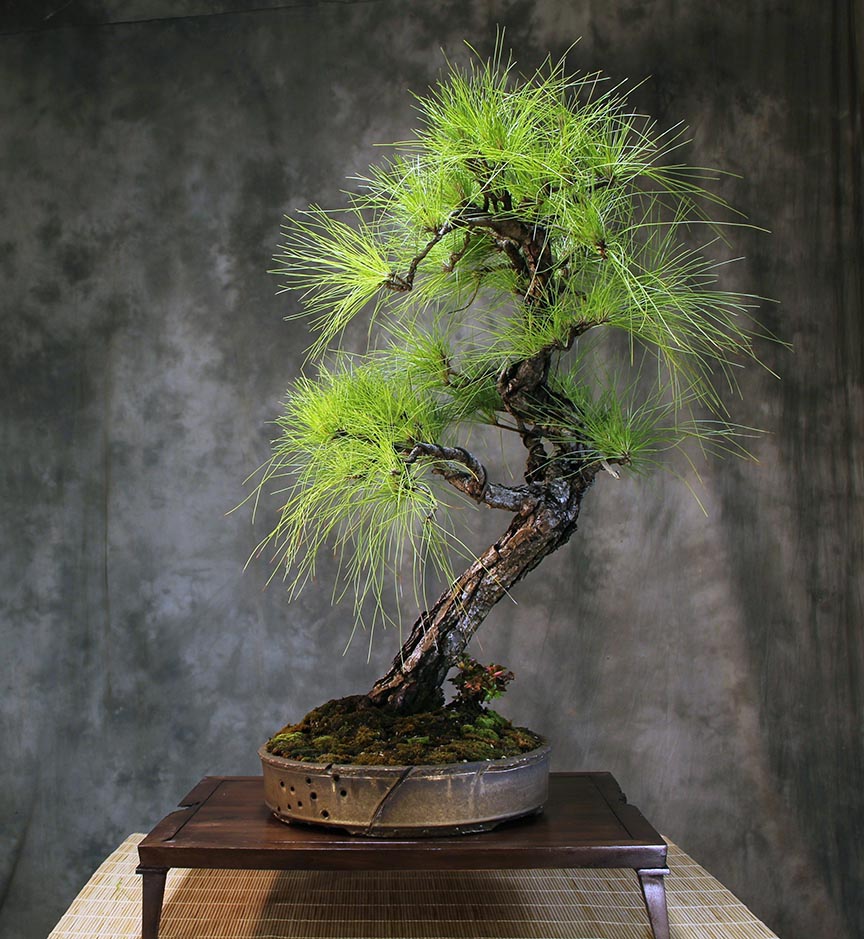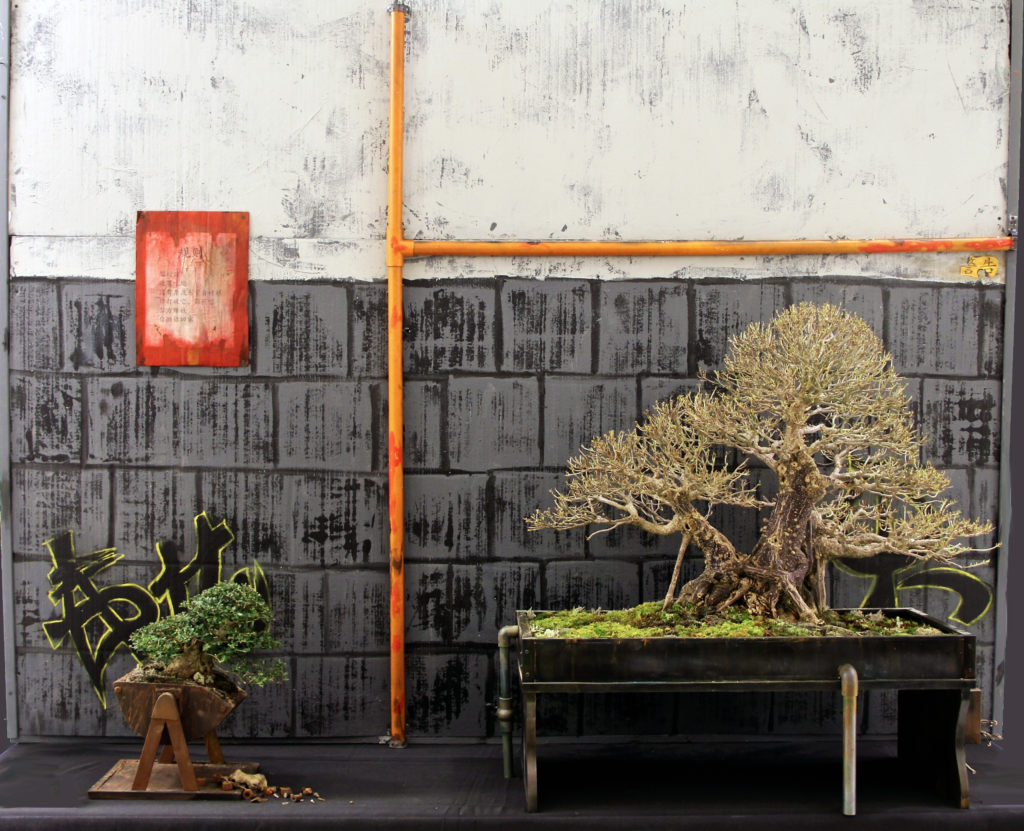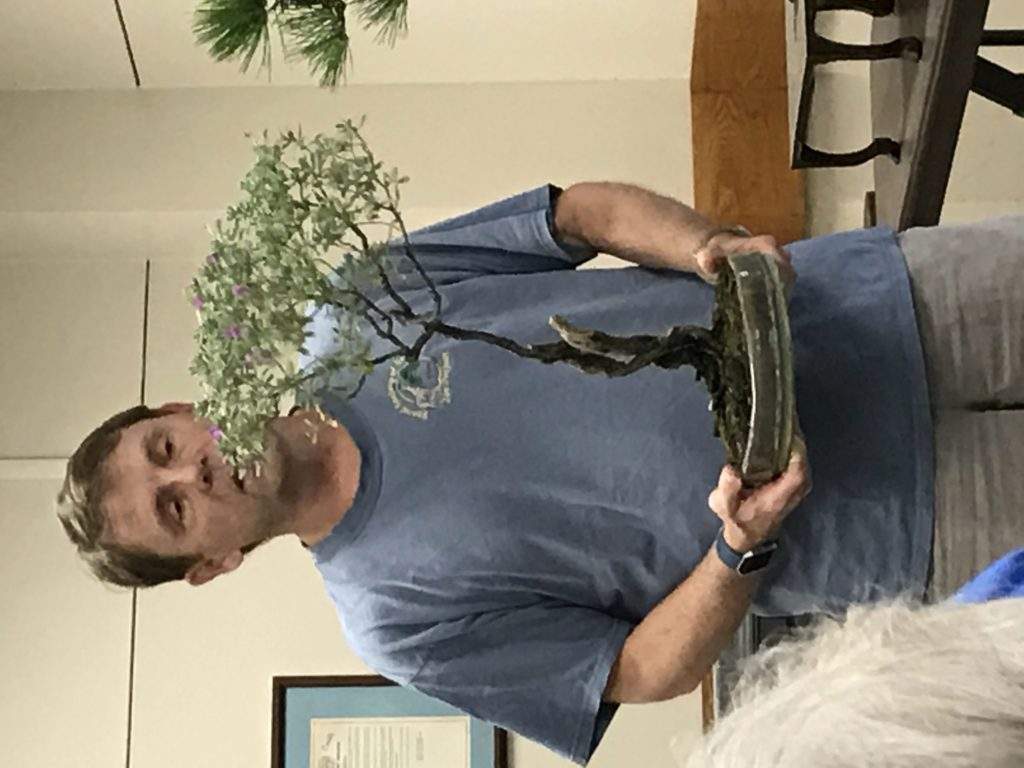The Bonsai of Average

I’ve traveled a lot over the last 30 years and I’ve noticed that there is a real trend towards homogeneity. Go from one city to another in the USA and you find the same look, strip malls, fast food restaurants, planned neighborhoods with similar boxy houses, familiar architecture, road and development proliferation and similar looking cars everywhere. It’s sarcastically called “Generica”. However, what I have also noticed it that this is not limited to the USA. Many other countries are following the same path. International airports around the world all have the same shops, cafes in global cites have the same look – raw wood, white walls, kind of hipster interior architecture –even the people across the world pretty much dress the same. You wouldn’t believe how many man buns I’ve see in all continents. It’s like the world has iterated itself down to average.
Bonsai design is not immune to this savage trend. A few years ago I attended the Kokufuten exhibition in Tokyo with a relatively new bonsai enthusiast. After he wandered the show by himself for two days he linked up with me and said, “If I see another Shimpaku juniper in a pot I am going to puke.” The homogeneity of the trees, even “world class trees,” can get tiresome.
A similar event happened when I attended the last Gingko show in Belgium nearly 10 years ago. The late Nick Lenz was in attendance and I walked with him and a few others through the exhibit. Nick, known to have a very different point of view, described one tree after another as “helmet on a stick,” next tree, “helmet on a stick.” When Nick returned home to write a review of the show for his personal blog, he didn’t even bother to talk about the trees but rather penned a bizarre but humorous account of his staying in a garage converted to a guest room in Ghent.

How did this happen? There are a couple of reasons.
Human nature needs humans to be copycats. As a species we rely on the progress of other humans to exist. Most of us don’t design and make clothes, or grow food, or build cars. We rely on the effort of other people for countless daily tasks. It seems natural when we take up bonsai we look to see what others have done and copy them. What exacerbates the issue is that many look to Japan for bonsai inspiration. And while Japan is a great country, it is one of the most homogeneous countries in the world. It is well published that Japanese people engage in group think. A favorite expression in Japan is “出る釘は打たれる” (pronounced “Deru kugi wa utareru”; the nail that sticks out gets hammered down). And while there is not total conformity in Japan and I wouldn’t build a view of Japanese culture on one phrase, on a continuum Japanese people would tend to the conformity side versus the individualism side. The west has sent hundreds of students to Japan to serve as apprentices and they have this conformity drilled into them. The trained professionals then bring that to their homes and perpetuate the notions. While Japanese inspired bonsai might look nice they do develop a rote-ness that borders on repetition.

Another reason is trees can only do so much – they need leaves, a trunk and something to grow in. The physiology of tree will dictate that it requires certain structures to live. These structures start to look similar. Different species might offer different characteristics, like needles versus single leaves versus compound leaves. Some trees might make nice flowers, while others have nice bark but in the end they start to look like “helmets on stick.”
Then there is craft versus art. Bonsai demos and programs are replete with rules – right branch, left branch, back branch. Apex over roots, no bar branches etc. We’ve seen and heard them all. For people new to the art, learning these rules means one has the ability to develop the rote-ness of a Japanese styled bonsai and to make nice trees. Most exhibitions reward the craft – look at any major bonsai exhibition and the winning trees typically perpetuate the craft-based design. The best-executed average trees win the accolades or awards. The trees that stick out get ignored (or hammered down.)
What can we as bonsai artists do about average? Maybe nothing. It is human nature and average trees can look good and bring pleasure and you can enter them in shows and join the clique. Many people have made a career doing this. But if you want to break average it will take some thought; some simple and perhaps some complex. It boils down to creativity. Can you think outside the box? Creativity can manifest itself in so many ways it would be foolish to try to list them all here. However I will throw out a few ideas:
Try unusual species or perhaps native species.

Have a design concept that goes beyond “Make a plant look old.” Making a tree look old is probably the most common bonsai design goal. Yet it is not the only one. Go back to your native culture and look for inspiration. You can find it in literature, geography, history, pretty much anywhere. Just think differently.
Break the pot idea. Try growing a tree in something other than a pot.
Get creative in tree displays. Consider using temporary scenery for a display instead of the typical two or three point display. Think multimedia. Mix video and sound and other stimuli with trees.

It might be interesting to try artificial intelligence to come up with a design. Ask ChatGPT to design a bonsai and then use that as a template.
This last one might take some effort – try genetic engineering. Mix the DNA of drought tolerant trees with those with small needles; mix flowers with pines. The sky the limits. (I did say it might take some effort.)
Rob Kempinski
Rob is an internationally recognized bonsai artist and author. He enjoys teaching bonsai at all levels and introducing newcomers to the pleasing art of growing miniature trees in a container. Rob has written many articles for bonsai magazines and journals. He has published several books, many on the art of bonsai.

Bonsai Society of Brevard
For more detailed information contact our Brevard based Bonsai club.
The Bonsai Society of Brevard is one of the many clubs within the Bonsai Societies of Florida.
